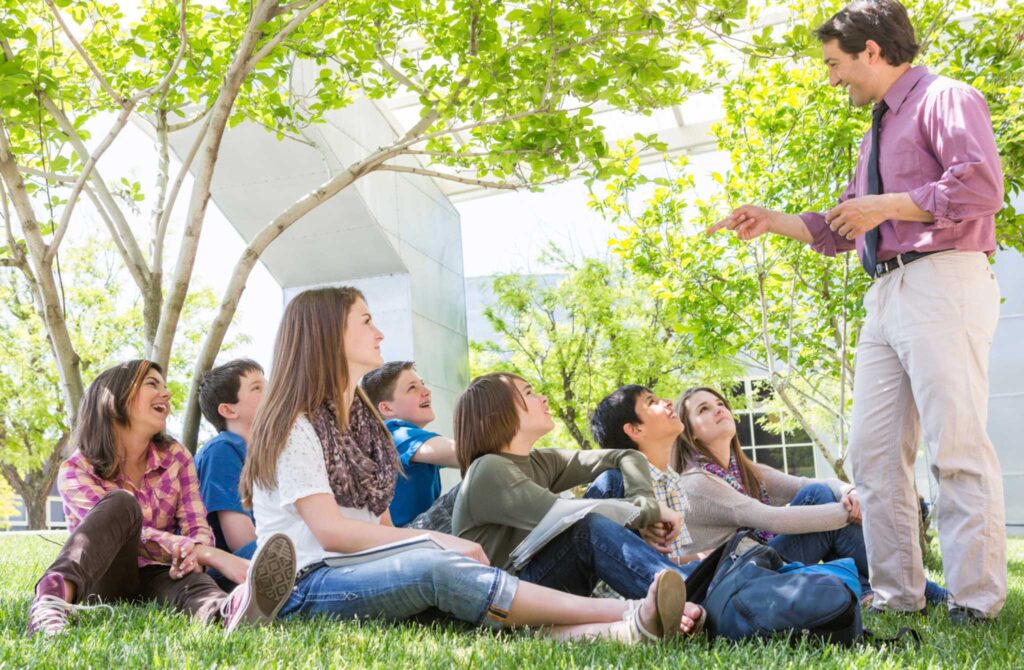How To Make Schools More Sustainable: Ultimate Guide
Estimated reading time: 13 minutes
It’s no surprise that most schools need to improve their sustainability. With growing concerns about global warming and climate change, schools’ environmental impact shouldn’t be overlooked. I worked as a teacher for fourteen years, so I know first-hand how much waste is created in a school. This is why it was important to me to write about how to make schools more sustainable. It’s not just about making your classroom sustainable, but the whole school – because it shouldn’t be solely the responsibility of the teachers to create an eco-school.
Teachers, students, administrators, school boards, trustees, parents – are you ready? Let’s go!
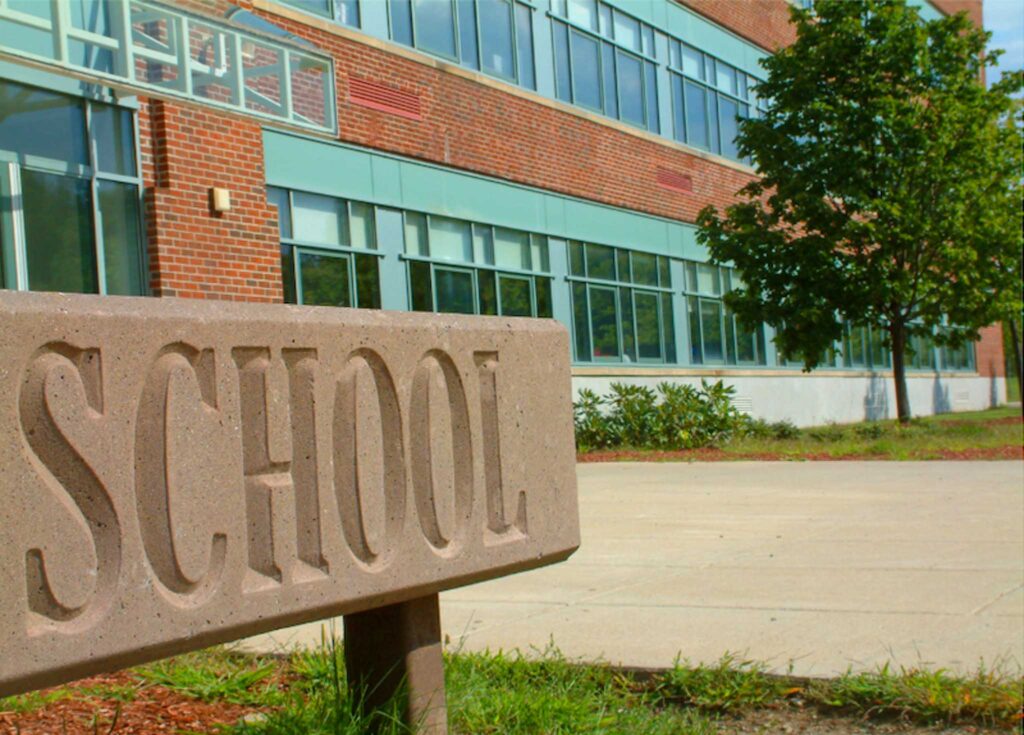
Jump To:
Sustainable Schools – what is a sustainable school?
Teach & Encourage Students – passing on sustainability knowledge is sustainable!
School Grounds – what’s on the outside does count!
Energy Consumption – reducing consumption and increasing efficiency.
Reduce Water Use – water conservation efforts in schools in critical.
Waste Reduction in Schools – food waste, paper waste, every kind of waste!
Get Parents Involved – the community counts.
In the Classroom – ideas to make your classroom more sustainable.

Sustainable Schools
What Makes a School Sustainable?
Well, that’s pretty subjective. There aren’t any set parameters or criteria that a school must meet to be considered a sustainable school, understandably so. However, the folks over at Project Learning Tree have developed a program in which schools can participate to become a “PLT Green School.” It seems like a fantastic place to start!
There is no such thing as a perfectly sustainable school. But, one that does its best to educate students about sustainability, reduce waste, water, and energy consumption, and involves the community, is doing well in my books. This may sound simple, but without the support of the entire school and everyone at every level, it’s not easy.
And since there is no formal definition of an eco-friendly school, all we can do is hope to implement as many of the green school initiatives discussed in this article as possible.
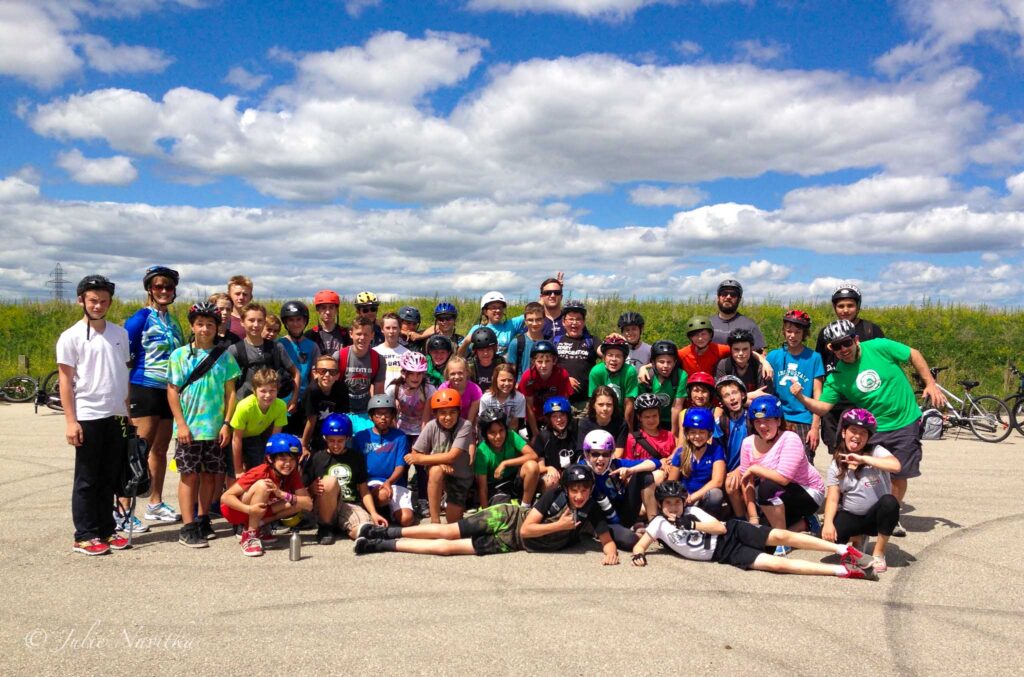
Encourage & Teach Students
Most teachers would agree that the most critical aspect of sustainability is teaching students about it and encouraging them to lead more sustainable lifestyles.
Encourage Pupils To Be More Sustainable
Teachers know that getting students involved helps them buy into an idea. Start a Green Club at your school where children come up with ideas to help make your school more sustainable. Encourage students to bike or walk to school, start a school awards chart for sustainable initiatives, or organize a zero-waste day (or week!) Teach kids about the 10+ Rs of sustainability, rather than just to reduce, reuse and recycle.
Teaching Environmental Awareness and Social & Economic Sustainability
To truly support sustainable development, we must teach kids about the equal importance of environmental awareness, societal issues and human rights, and economic sustainability. This goes beyond simply teaching pupils about recycling, climate change, carbon footprints, and human rights.
Hop over and check out the UN’s 17 Goals for Sustainable Development to get started! Encourage your district or division to implement and prioritize green curriculum development. Encourage student-led environmental initiatives at school – perhaps even helping form a Sustainable Development Committee with kids!
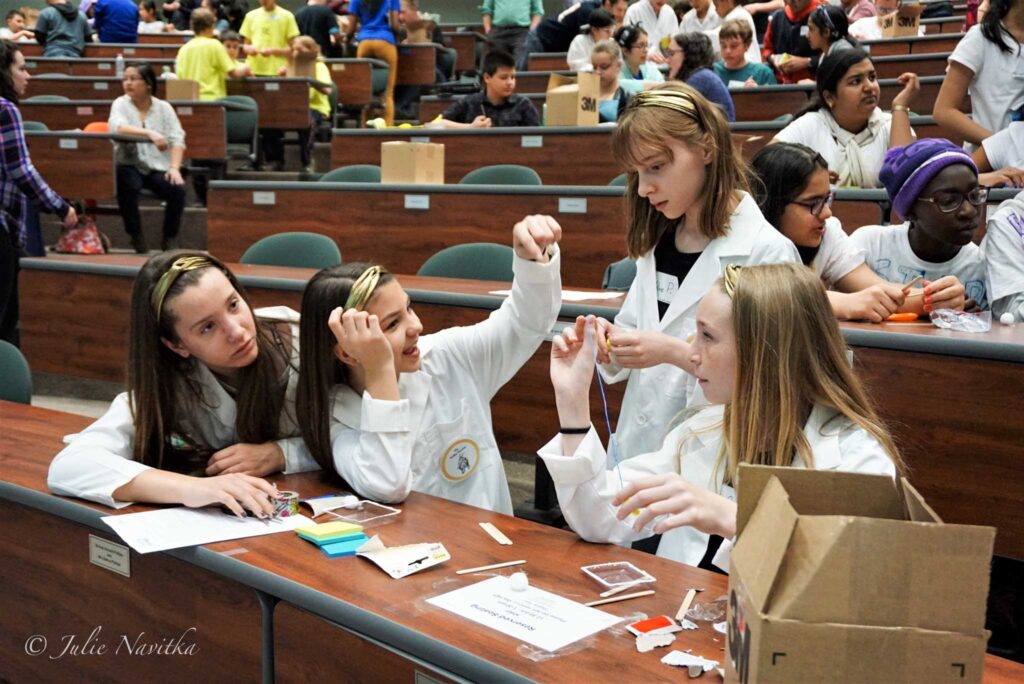
School Grounds
The greenest place at your school may be the biggest offender! Don’t worry, there are many ways you can increase the sustainability of your school grounds.
Plant a Garden
Why not plant a garden in the school field? A fantastic project for students and a great way to get them learning outside in nature. Teaching kids about gardening and growing food will encourage them to do so independently at home or later on as adults. An added benefit will be that you will be growing your own food for lunch or home economics programs you may have at your school. Is your school in an urban environment without a field? Take advantage of any flat roofs on the building and plant one there!
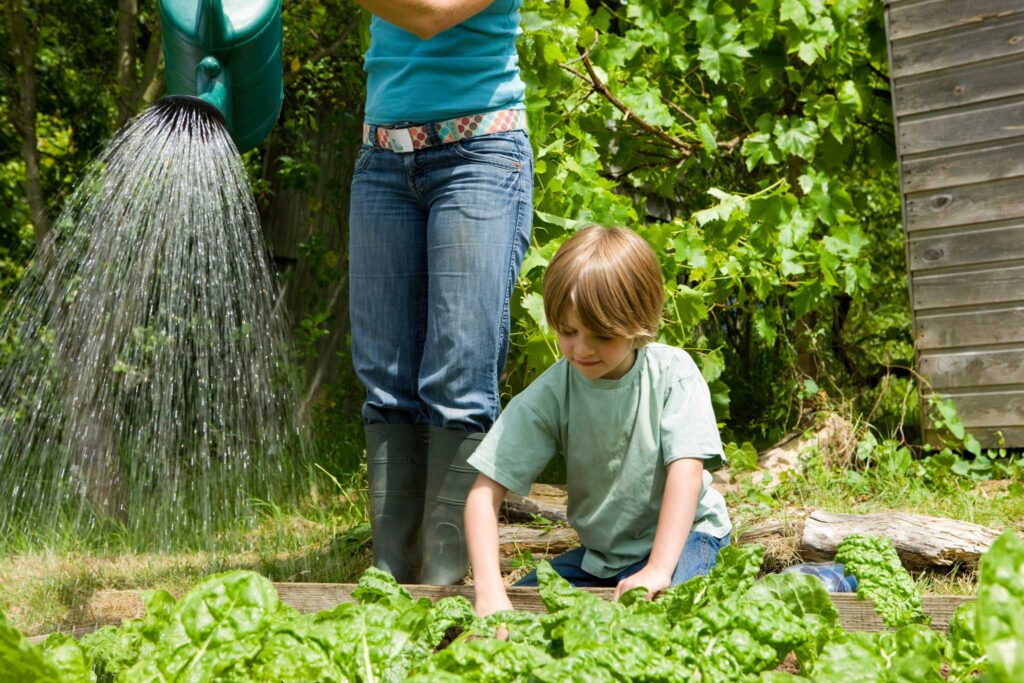
School Field
Is your school field just one colossal space covered in grass like all of mine were growing up? Grass is certainly not the most eco-friendly ground cover to lead to sustainable recreation. There are far better biodiversity initiatives that can be implemented on school grounds.
Sure, a nice grassy soccer or sports field is a good place for kids to get some exercise, but what about all that other space?
Native plants bring pollinators to your garden. Pea gravel lends well to the area around a play structure. Most kids are not too old for a sandbox. Make it big enough to host a beach volleyball court! A baseball diamond of dirt would suffice to have a decent ball game. More trees. The school I worked at had a whole forest in the field and even some walking trails to enjoy! Alternative ground cover such as clover or creeping thyme will reduce (or eliminate!) watering and cutting – research what grows best in your area.

With so many options, what will you design first?
Energy Consumption
With so many people in one building, energy use is bound to be abundant. But that doesn’t mean we can’t cut a school’s carbon footprint and energy costs! Here are some ideas to make your school a more green school.
Reducing Energy Use
If you’re a teacher, have your students conduct an energy audit and devise ways your school could reduce energy usage. Some terrific ideas to look for and encourage would be turning off lights, electronics, and appliances when not in use. The school could further install motion sensor lights in hallways and washrooms.
Heating and cooling can account for up to 70% of a school’s energy use. Whether the individual teachers, the school, or the school board controls the thermostat, making small changes here can make a big difference. And the school will save money while being more environmentally friendly!
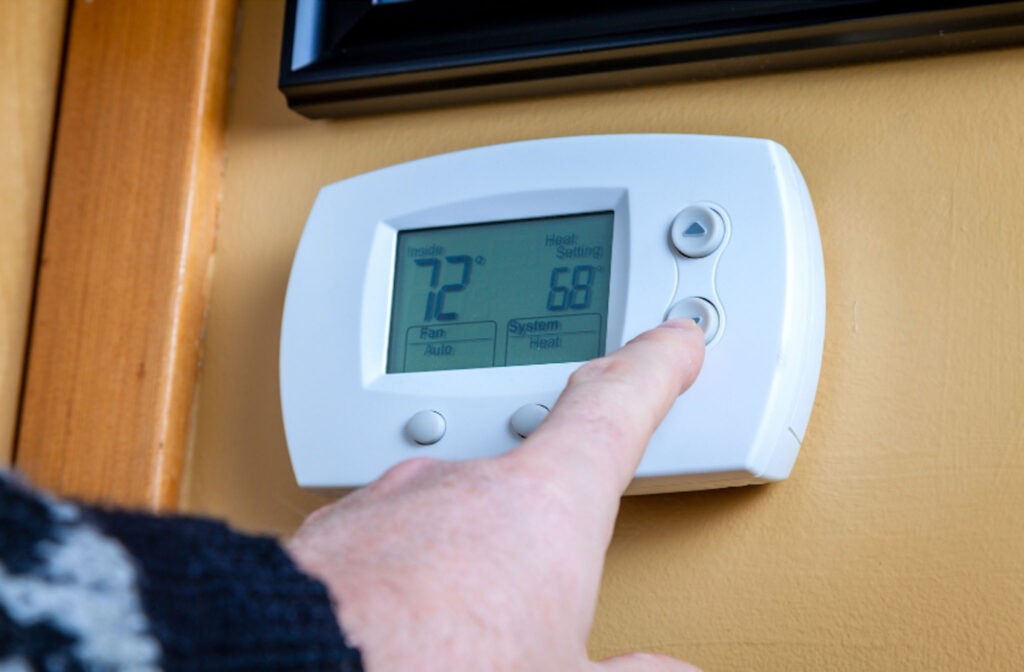
Increasing Energy Efficiency
Part of reducing energy use is increasing efficiency. When it comes time to replace light bulbs, do so with energy-efficient lighting. Old schools tend to have toilets that use up to four gallons per flush! Learn how they can be retrofitted before they’re ready to be replaced with high-efficiency toilets. Alternative forms of energy are worth the financial savings the school will see in the end. Why not switch to solar power and install solar panels on the ample roof? Renewable energy in educational institutions should be the norm, if our children are the future!
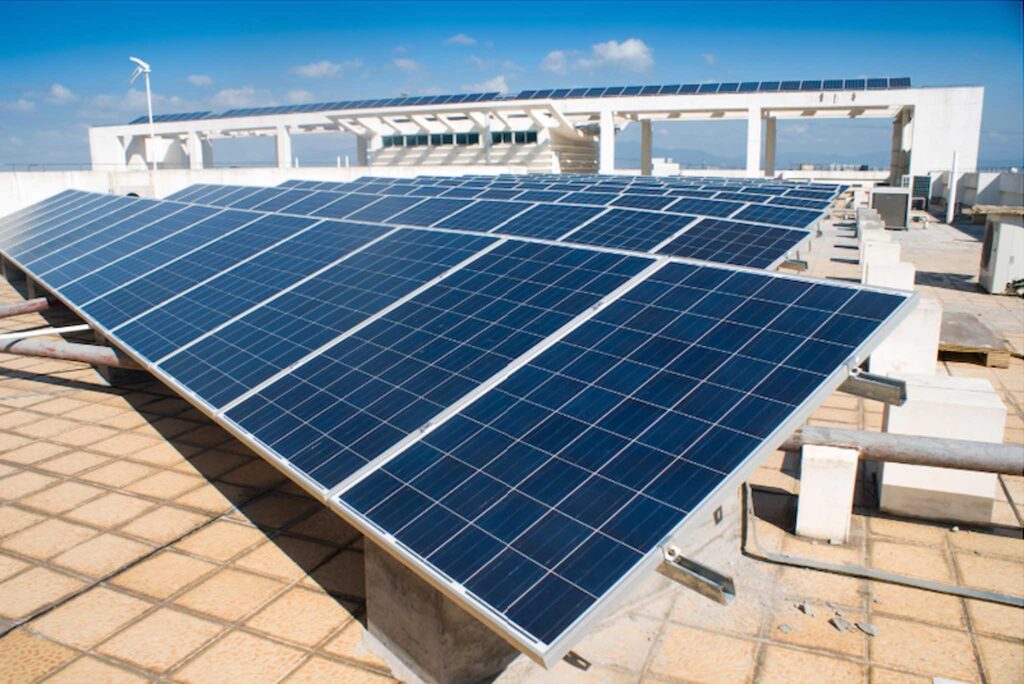
Most of these changes need to come from above, which is why I stated earlier that teachers and motivated students couldn’t do this alone. Parents, the community, board members, and others must start demanding more environmentally friendly schools.
Reduce Water Use
One of my passions is water conservation. So much so that every year for Science class, I had my students do a Water Tracking Project to teach them how to reduce water use at home and school (find a link in the resources below). How can we possibly teach our children the importance of conserving water in a building that wastes and pollutes so much of it?
Water Use
On top of the low-flow, efficient toilets you just installed, make the switch to eco-friendly toilet paper! There are still even more ways to increase water conservation in educational institutions. Install low-flow taps in the bathrooms. Invest in some rain barrels to collect rainwater for that garden you planted. Encourage kids not to leave the sinks or water fountain running when not in use. If the staff or Home Economics room has a dishwasher, ensure it only runs when full and replace it with a more eco-friendly one when it’s time.
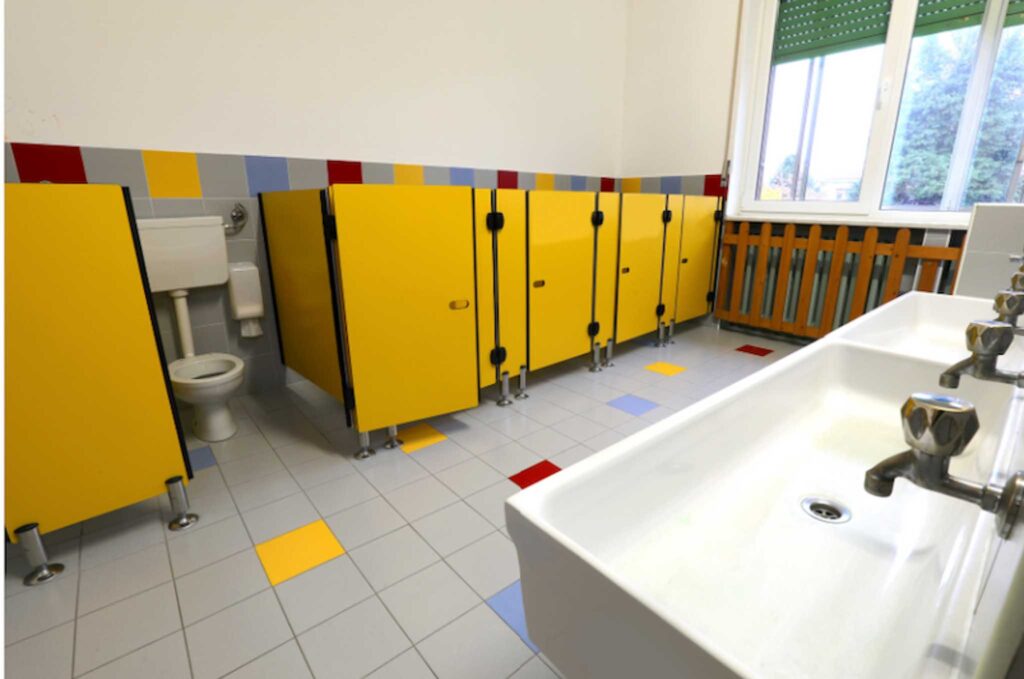
Water Conservation
Remember, this isn’t all just about using less water. It’s also about protecting our waterways, lakes and oceans from the effects of pollution too. The use of chemicals in schools, from those found in building materials to foods, and cleaning products, is concerning. Not only for the environment – children are far more affected by exposure to toxins than adults. Head to the EPA‘s website to find out how school chemicals and toxins can be reduced (or even eliminated).
Reduce Waste
We all know that healthy food usually doesn’t come wrapped in plastic. Single-use plastic is abundant in schools, most of which occurs at lunch. Add abundant paper use and food waste to that plastic pollution, and the landfill is brimming.
Food Waste
Every day after lunch, the garbage bins in classrooms contain half-eaten food and a ton of food scraps that could be composted. I always encourage pupils to bring their food in reusable containers. This eliminates plastic waste and allows them to bring food they don’t finish home rather than throwing it away. Parents, whether it’s you or your kids packing school meals, I encourage you to have this conversation with them as well. If you need help finding sustainable lunch boxes and accessories, we have an article for that!
If your school has a cafeteria that supplies students with lunch, one way to make your school more green is to buy ingredients locally and in season. Sustainable (and healthy) food options should be a priority in school cafeterias.
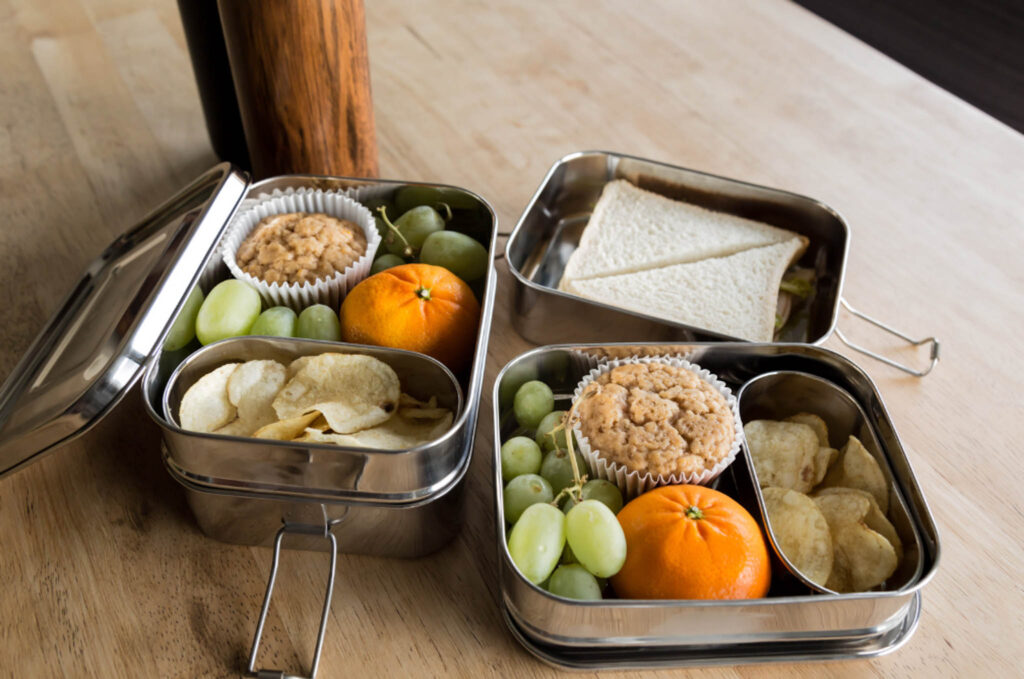
Composting
You’re already growing food in the school garden, so why not work with that Green Team of students and implement a school compost program to create some fantastic natural fertilizer? There are many ways to make or get your hands on a compost bin (or several) for your school. Place a container such as a five-gallon bucket in each lunch room for food waste and have a team collect it once a day to bring it out to the main bin outside. Easy peasy!
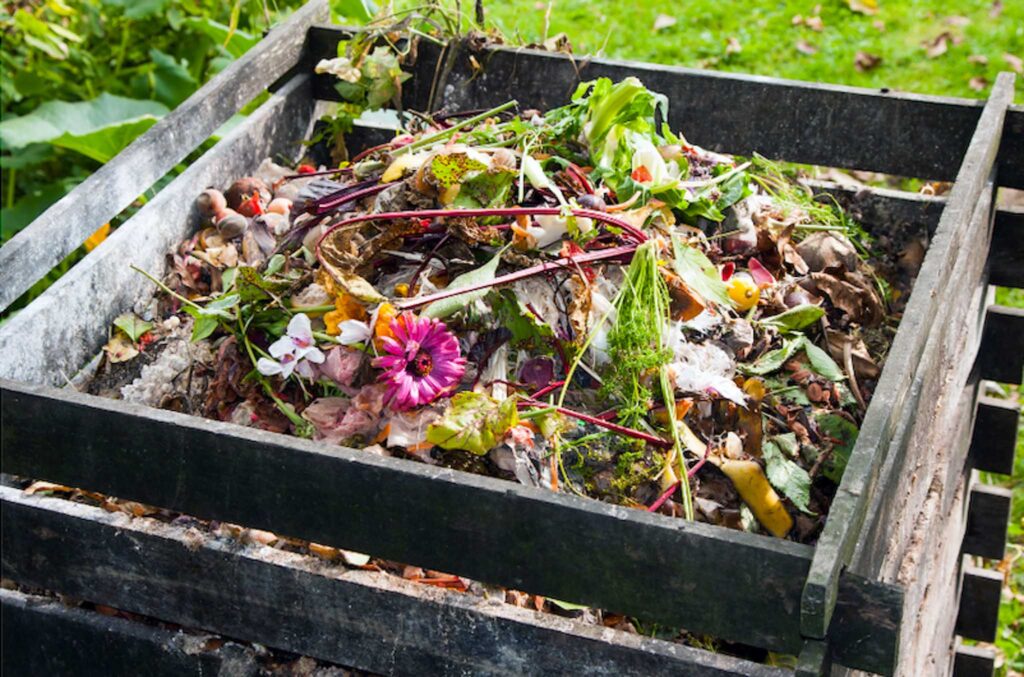
Recycling Station
Most schools likely have recycling bins in each classroom and common area. But do students know which types of materials can be recycled? Should the recycled materials be sorted in some particular way before being picked up? Do some digging with your students to find the proper way to recycle in your city, and have a team sort the recycling containers before pick-up day.
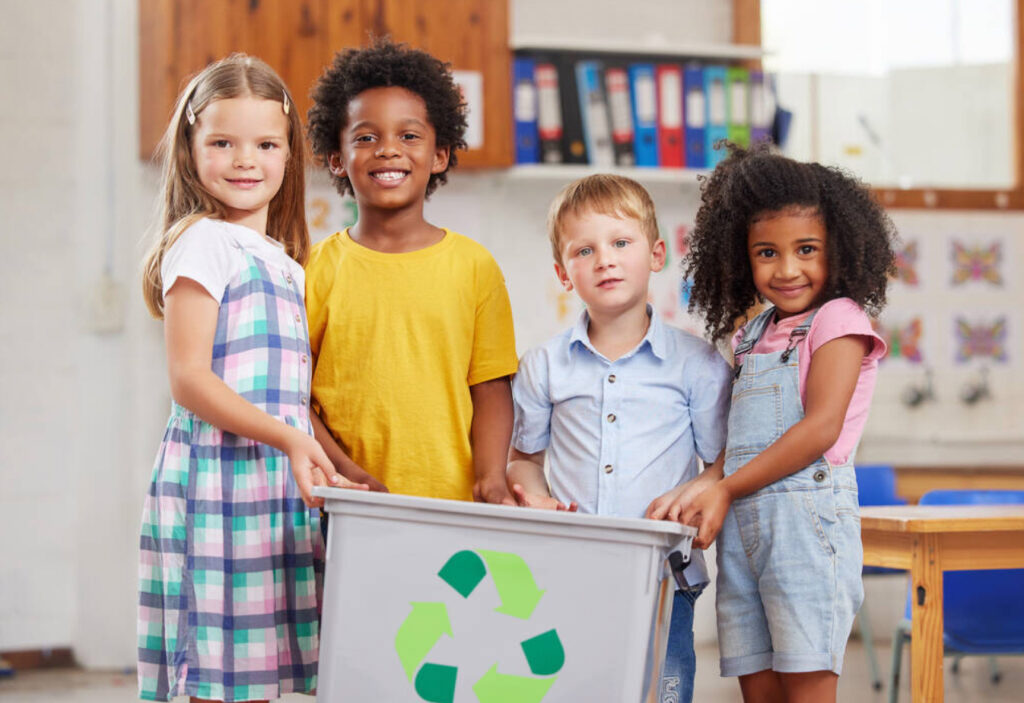
Sign up for some of TerraCycle’s School Recycling Programs to earn points your school can redeem for cash!
Get Parents Involved
As previously mentioned, it takes more than the teachers alone to make sustainability at schools happen. Achieving anything in schools or with kids is almost impossible without the support of parents.
The first step is to advise guardians of your hopes to create a more sustainable school. Supply a list of initiatives you are implementing and ask them to commit their support where possible. Eco-friendly education starts at home, and parents have more opportunities to encourage their children to lead more sustainable lifestyles. Hold information sessions for families to get them on board with your vision. Ask for parent volunteers or seek out skills from the local community to help realize visions for a greener school. Provide guardians with a list of brands that make eco-friendly and sustainable school supplies.
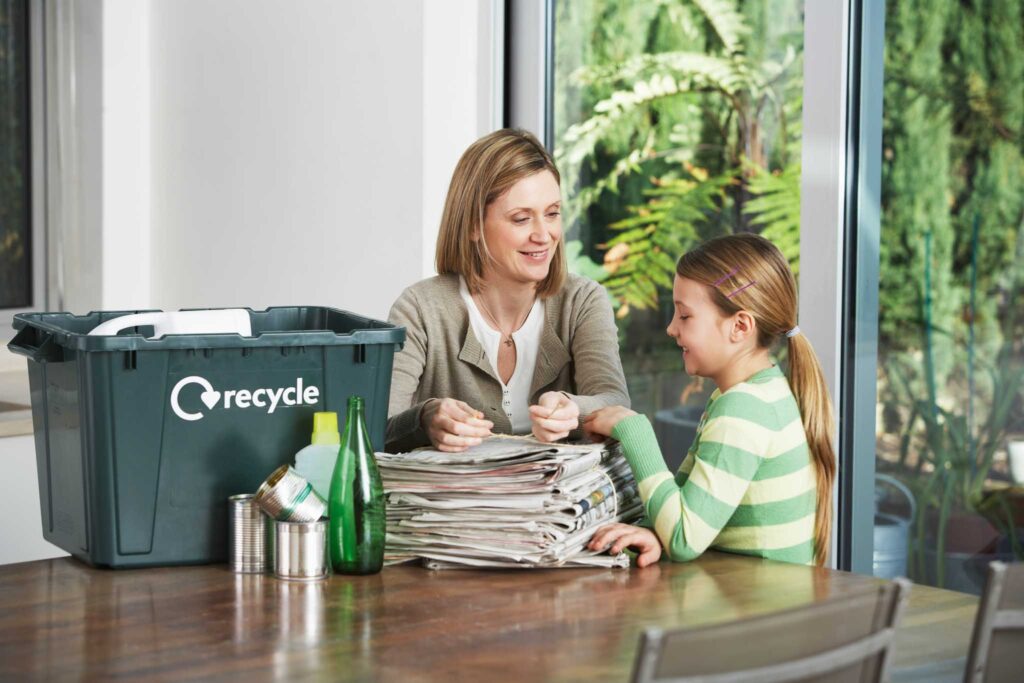
In the Classroom
There are many ways to keep the sustainability train going on a smaller scale in the classroom. Here is where teachers may have more autonomy and control over how environmentally friendly their space can be. Whether you’re looking to create a zero-waste classroom, or to start small with some easy-to-implement ideas, practising what you preach is vital. Also, if studies show that employees that work in more sustainable spaces are more productive, so greening your workplace benefits the school staff too!
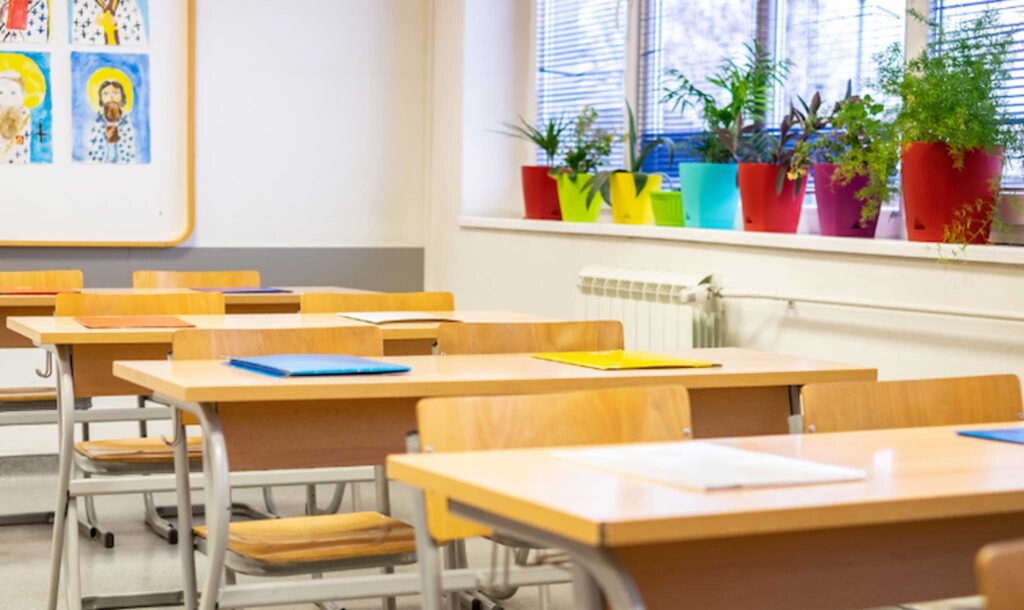
Head over to our article Sustainable Classroom Ideas: Tips for a Green Classroom to help you create a more sustainable space with eco-friendly materials, sustainable practices, student activities, and green products.
In Conclusion
Just as it takes a village to raise a child, it takes everyone involved to create more eco-friendly and sustainable schools. From the building itself to the learning in and out of the classroom and the school grounds, many elements are needed to achieve green schools.
Together, we can help inspire young people to care about sustainable development and the future of our planet and its people.
Resources
Planet Learning Tree’s GreenSchools Investigations – seems as if you make an account you can download PDFs for free!
Water Tracking Project I used with students – view the PDF in the article “Easy Activities to Teach Kids about Sustainability”
Project Learning Tree Interactive School Poster (excellent visual)



